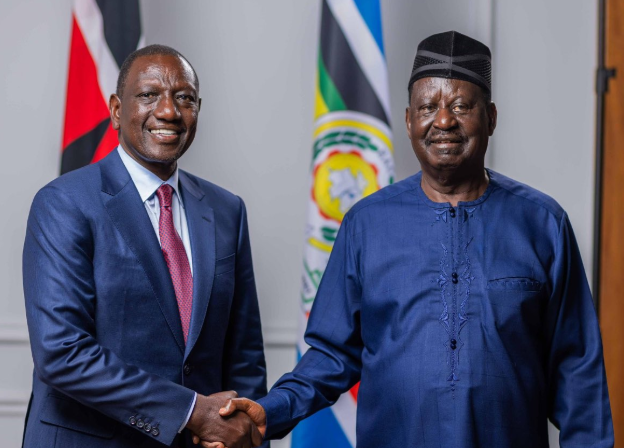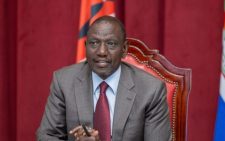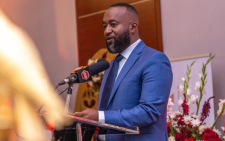The defining twist in Kenya’s political game

Kenya’s political landscape has always been a battleground of shifting allegiances, surprise betrayals, and defining moments that alter the course of leadership.
As a historian deeply invested in political dynamics, I view the unfolding events with a sense of historical continuity, recognizing patterns that have shaped the nation’s governance since the return of multiparty democracy in 1992.
The past teaches us that power in Kenya is never absolute, and those who fail to read the political tides risk being swept aside. The question now is whether President William Ruto will withstand the unpredictable nature of Kenyan politics or whether the nation is primed for another “Tosha” moment that will redefine its leadership.
The 1992 elections marked the dawn of multiparty politics, ending nearly three decades of KANU’s one-party rule. However, the opposition—despite their shared goal of unseating President Daniel arap Moi—failed to unite. Divisions within the Forum for the Restoration of Democracy (FORD) led to the formation of FORD-Kenya under Jaramogi Oginga Odinga and FORD-Asili under Kenneth Matiba, while Mwai Kibaki launched the Democratic Party (DP). This fragmentation handed Moi an easy victory, securing his reelection with just 36% of the vote. A similar scenario played out in 1997, as opposition leaders ran separately and once again allowed Moi to cling to power.
Recognizing the futility of disjointed opposition, Raila Odinga merged his National Development Party (NDP) with KANU in 1999, a bold move that positioned him as a possible successor to Moi. However, when Moi endorsed Uhuru Kenyatta instead, Raila defected with other senior KANU figures, forming the Liberal Democratic Party (LDP). This set the stage for the historic 2002 elections, where the National Rainbow Coalition (NARC) was born from an alliance between Raila’s LDP and Mwai Kibaki’s National Alliance of Kenya (NAK). Raila’s famous declaration—”Kibaki Tosha”—became the defining moment that led to KANU’s first defeat since independence.
Despite this victory, unity proved elusive. The post-election fallout led to the collapse of NARC, and by 2007, Kenya was once again deeply divided. The fiercely contested election between Kibaki’s Party of National Unity (PNU) and Raila’s Orange Democratic Movement (ODM) resulted in a disputed outcome, triggering post-election violence. International mediation led to a power-sharing agreement, with Kibaki retaining the presidency and Raila assuming the newly created role of Prime Minister. The Grand Coalition Government reinforced a key political reality—no single party could govern Kenya without alliances.
By 2013, coalitions became the norm. Uhuru Kenyatta and William Ruto formed the Jubilee Alliance, bringing together The National Alliance (TNA) and the United Republican Party (URP), while the opposition regrouped under the Coalition for Reforms and Democracy (CORD), later rebranding as NASA in 2017. Despite NASA’s efforts to challenge the election results, Uhuru and Ruto retained power. The post-election period, however, saw a dramatic shift when Raila and Uhuru reconciled through the famous “Handshake,” sidelining Ruto and altering the political equation.
As 2022 approached, Ruto, sensing betrayal from his boss, charted his own path with Kenya Kwanza. His grassroots campaign, championing the “hustler” movement, proved effective against the state-backed Azimio la Umoja, led by Raila with Uhuru’s support. Ruto’s victory reaffirmed that power is never absolute in Kenya’s politics—allegiances shift, and political fortunes can change in an instant.
For a new “Tosha” moment to materialize, several conditions must align. First, there must be a strong opposition candidate capable of uniting diverse constituencies. Second, opposition leaders must resist the lure of fragmentation, which has cost them victories in the past. Third, voter discontent must be high enough to drive demand for change. If economic challenges persist, will voters coalesce around a new political narrative?
Yet, an even deeper question lingers: Have Kenyan voters moved beyond personality-driven politics? While past elections have been defined by individual endorsements, there is growing demand for issue-based leadership. economic performance take center stage?
As the countdown to 2027 begins, one thing is certain—Kenya’s political drama is far from over.
The writer teaches history and is the UASU Chapter Trustee, Alupe University-Kenya Email: chebiizk@gmail.com















